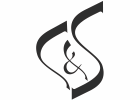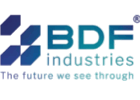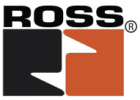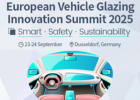Eco passive house from wood – on the way to the PHI seal
Climate change, scarce resources, tighter regulations or higher energy costs: all these are challenging drivers for greater change in our built world. The Passive House Institute (PHI) in Darmstadt, Germany, has been pointing the way to energy-efficient and resource-saving construction for 25 years. The PHI seal is now highly regarded around the world. As “certified passive house components”, the spacer bars of SWISSPACER offer good support on the way to a certified passive house. This fact has been put to good use by a manufacturer of eco passive houses in Spain.
They are energy efficient, comfortable, economical and environmentally friendly – passive houses are gaining in importance worldwide. The independent research institute PHI was and is an important pioneer in this regard and the PHI seal highly sought after. For example, the Spanish company 100x100biopasiva is currently building an eco passive house out of wood not far from Madrid. The building with 210 square metres of living space is also expected to obtain the Passive House certificate, which sets especially stringent standards around the world in terms of energy efficiency and comfort.
Obtaining the PHI seal with reliable components
To build the house, the company is using extensively natural, recycled materials with a very low environmental footprint. The basic structure of the house consists of a lightweight timber frame that is pre-fabricated at 100x100biopasiva. A 3 kWp photovoltaic system, a heat pump of the latest generation for air conditioning and making hot water, a ventilation system with energy recovery and an air filter for maximum air quality are the project’s technical components. 100x100biopasiva calculates the optimum insulation for all houses depending on the location and climate zone – in this case, the house is being given 26 to 28 cm-thick insulation made from formaldehyde-free recycled material both for the external walls and for the roof.
The windows of the manufacturer Blas Recio e Hijos are one of the components in the building envelope that contribute decisively to meeting the requirements of the Spanish environmental seal VERDE and of the Passive House certificate. The triple insulating glazing units with warm edge spacer bars from SWISSPACER enable a Uw value of up to 0.8 W/(m2K).
Simplification of the certification process
Warm edge spacer bars have low lambda values and make a significant contribution to minimising the energy lost via the glazing edge. They improve the U values of windows and façades and noticeably increase the energy efficiency of the entire building. In addition, the spacer bars from SWISSPACER offer a high degree of reliability as PHI-certified components: they are tested to uniform criteria, have comparable characteristic values and are of excellent quality in terms of their energy performance. That simplifies planning significantly and contributes hugely to ensuring that the completed passive house functions flawlessly. Certified products thus have a distinct advantage when, for example, the specifications of the windows change again.
“That makes things simpler for everyone involved and is a powerful argument,” says Mario Kindler, Product Manager at SWISSPACER. “It simplifies processes on the way to the Passive House seal and makes certification more attractive. Such an incentive is helping to spread the Passive House idea far and wide. That’s important to us; after all, we’re using it to shape the world of tomorrow.
Energy efficiency and comfort go hand in hand
The spacer bars from SWISSPACER have carried the PHI seal since 2015 and are currently used in two thirds of the certified passive house windows, fixed glazing units and sliding doors (230 out of 348). In façades and glass roofs, they account for an impressive 83 percent share (49 out of 59).
“Extremely energy-efficient buildings are decisive for a climate-compatible building stock,” says Prof Dr Benjamin Krick, managing director of the Passive House Institute. “Only when buildings generally need much less energy for heating or cooling can we achieve climate neutrality in the construction sector. The good news is: we can achieve that and even reduce overall costs at the same time. By taking a savvy approach to planning and building efficiently in terms of energy and costs. Certified passive house components help with this.”
SWISSPACER demonstrates ideal solidarity with the PHI with joint studies and the special prize “Living Comfort”, which was presented at the Passive House Award 2021: the Swiss company will award the prize for the first time during the International Passive House conference in Wuppertal in September 2021. From the 73 entries from 19 countries, a neutral jury will select one project for which the thermal quality of the windows and their acoustic integration into the building envelope is ensured to the greatest extent possible.
“We are pleased that strong and innovative manufacturers like SWISSPACER are supporting the passive house community so effectively,” says Krick. And Kindler adds, “We simply want to show that extremely energy-efficient construction also means big gains in living comfort.

























